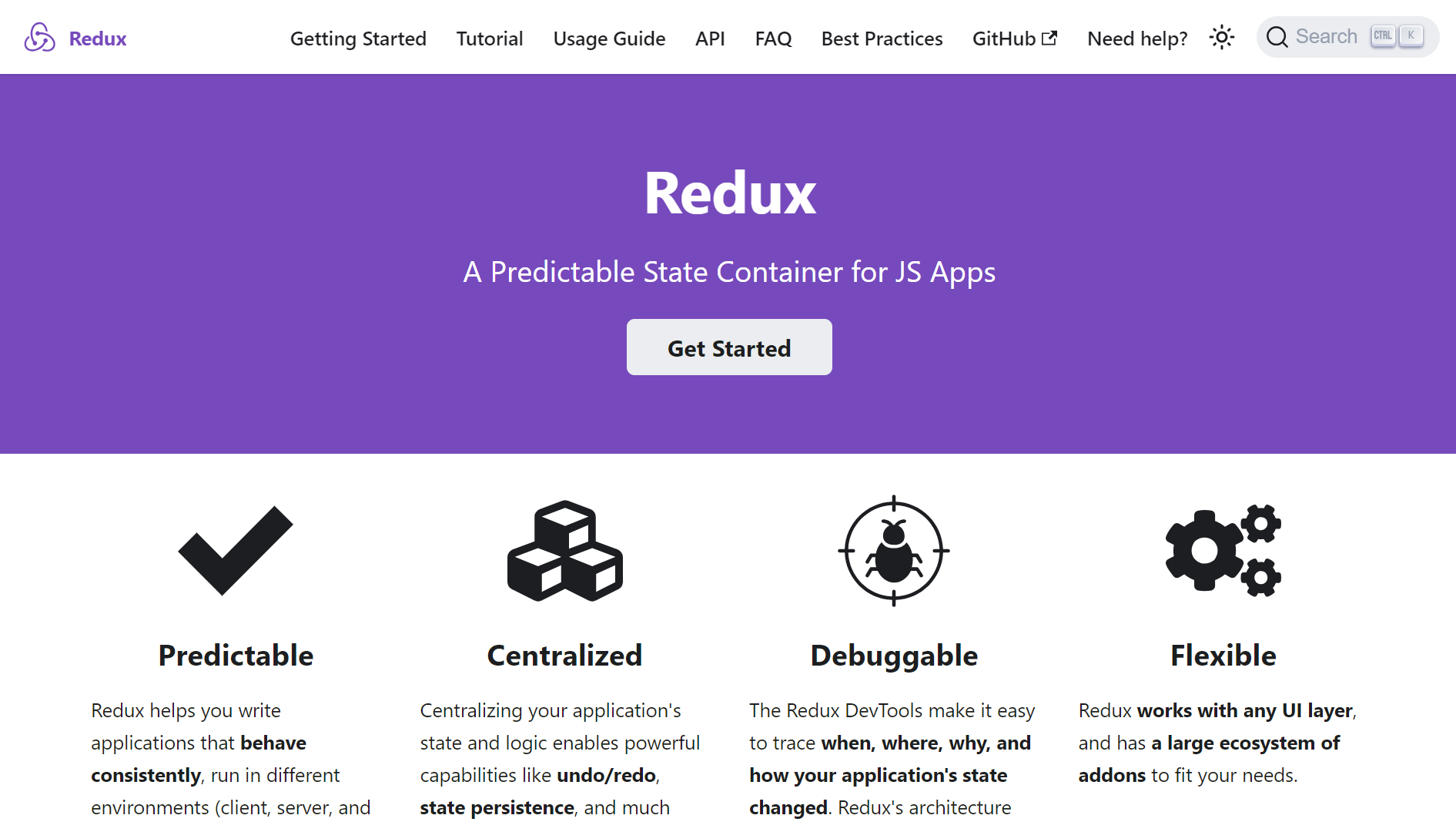Most Useful and Impactful React Ecosystem Libraries
Explore some of the most useful and impactful React ecosystem libraries.
One of the best things about React is the rich ecosystem of libraries and tools that helps developers build apps quickly. Here, we list some enduring and widely favored React ecosystem libraries.
Next.js

Next.js, a full-stack React framework, is utilized by some of the biggest companies globally to build top-notch web applications. It offers automatic optimizations, data fetching, routing, server functions, API endpoints, and more, solidifying its position as a robust full-stack React framework.
By the numbers (accurate as of 26th Feb 2024):
- GitHub stars: ~119k
Remix

Remix is a full stack React framework with a focus on web fundamentals and modern web app UX, enabling developers to build better websites with faster and smoother user experiences. It allows data loading, code splitting, and UI transitions to be handled by the URL segments, resulting in snappy page loads and instant transitions. Furthermore, it supports HTML forms, handles both the server and client side, has built-in error handling, and supports route error boundaries. Its abundance of features allow it to stand-out as one of the most impactful React libraries.
By the numbers (accurate as of 26th Feb 2024):
- GitHub stars: ~26.7k
React Query

Additionally, React Query is a library that provides declarative, always-up-to-date auto-managed queries and mutations for data fetching in React applications. It handles caching, background updates, stale data, and many more with zero-configuration. It simplifies data fetching logic, improves developer and user experiences, supports complex workflows, and works with any backend.
By the numbers (accurate as of 26th Feb 2024):
- GitHub stars: ~38.7k
Docusaurus

Docusaurus is a react-based static website generator. It includes customization, localization, versioning, search, and dark mode features to improve user experience and aid in documentation creation.
By the numbers (accurate as of 26th Feb 2024):
- GitHub stars: ~51.5k
React Hook Form

React Hook Form allows for better form state management and validation as it is a library for building forms in React with less code and better performance. It offers a feature-complete API, a constraint-based validation system, a small package size, minimal re-renders, easy adoption, and consistent validation strategies.
By the numbers (accurate as of 26th Feb 2024):
- GitHub stars: ~38.9k
React Router

React Router is instrumental in implementing declarative routing within React applications. Its approach simplifies the creation of dynamic, single-page applications, allowing developers to manage navigation and view transitions with ease. The library's popularity and utility in the React ecosystem are evident from its GitHub stars, underscoring its role in shaping modern web application development.
By the numbers (accurate as of 26th Feb 2024):
- GitHub stars: ~51.7k
Redux / React Redux

Redux / React Redux is a predictable state management for JavaScript apps in a consistent, predictable, and testable way. It enables powerful features like undo/redo, state persistence, and more. One of its features, Redux DevTools, can debug and trace state changes, with time-travel and error reporting capabilities. Most importantly, Redux works with any UI layer and has a large ecosystem of addons to fit different needs.
By the numbers (accurate as of 26th Feb 2024):
- GitHub stars: ~60.3k
Framer Motion

Meanwhile, Framer Motion is an open source, production-ready animation and gesture library for React on the web. Possessing straightforward syntax, robust capabilities, and optimized performance make it one of the most valuable libraries in the React ecosystem.
By the numbers (accurate as of 26th Feb 2024):
- GitHub stars: ~21.4k
React Testing Library

React Testing Library is one of the best choices for testing React components that emphasizes user experience, providing easy-to-use APIs for different frameworks such as Angular, Vue, and React. It also includes extensions for Cypress and React Native, which further displays its versatility and effectiveness.
By the numbers (accurate as of 26th Feb 2024):
- GitHub stars: ~18.5k
React Email

React Email consists of high-quality, unstyled components for creating beautiful emails using React. The components are responsive, accessible, customizable, and compatible with most email clients. They also back server-side rendering and CSS inclining, making it a valuable tool in the React ecosystem for creating impactful email campaigns.
By the numbers (accurate as of 26th Feb 2024):
- GitHub stars: ~11.7k
React Use
Last but not least, React Use is a large library of React hooks, ported from libreact, that provide various functionalities for React components. This shows how it can be a valuable resource for developers seeking to enhance their applications with custom hooks, as reflected in its GitHub stars.
By the numbers (accurate as of 26th Feb 2024):
- GitHub stars: ~39.8k

The React ecosystem consists of countless libraries that streamline web development and tackle many different challenges. Each of the libraries mentioned have a crucial role in improving the quality and efficiency of web apps development. With strong community support, the React ecosystem is a dynamic and invaluable resource for developers.